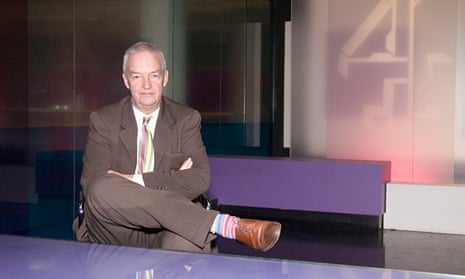On his return from Gaza last week, Jon Snow – the face of Channel 4 News – recorded a three-and-a-half-minute video entitled “The children of Gaza”. It was an appeal straight to the hearts and minds of viewers. “I can’t get those images out of my mind,” he told them, talking about his visit to a medical centre treating children wounded in the conflict.
“In a very densely packed urban area, if you decide to throw missiles, shells and the rest, then you will undoubtedly kill children.”
Snow’s video went viral. Supporters applauded its frankness. Opponents registered their disquiet that an anchor should intervene so directly in a story he had been covering. At the time of writing, it has received over 1 million views across the channel’s social media platforms. But it was never broadcast on Channel 4 News itself.
The most likely reasons for the video’s non-appearance on television are the rules that bind all TV broadcasters in the UK, set down in law and enforced by the regulator Ofcom. A core requirement for all TV news – but not newspapers or internet outlets – is that events are presented with “due accuracy” and “due impartiality”.
The regulator tries to be reasonable in defining these terms to avoid every issue being presented as a false he-said-she-said narrative – the worst cases are often climate change coverage misrepresenting a global scientific consensus as an evenly split debate.
But the code is still inflexible in parts, and foremost among those is a section requiring broadcasters to “exclude all expressions of the views and opinions of the person providing the service”.
So our TV channels can hire the world’s most experienced and expert journalists and send them to hellish environments to act as our eyes, but heaven forbid they give a verdict on what they see.
In practice, this rule is broken daily in small ways: any time Newsnight or another programme turns to a correspondent for analysis, the boundary is being skirted, while the BBC’s Daily Politics using Katie Hopkins to report a segment on benefits claimants would seem to hop, skip and jump right through the centre of it.
The broader question is what purpose the rule is meant to serve. If anyone ever believed that presenters and reporters popped into existence aged 35 and free of all political opinions, there are plenty of examples to the contrary. The latest is Jeremy Paxman, who admitted just days after retiring from Newsnight that he’s a “one-nation Tory”.
What then is gained by making people who have opinions withhold them? Journalists’ views shape the questions they ask, the people they interview, the images they choose to show, and more. The current system requires those judgments, and the reasons behind them, to be hidden from the audience in a pretence of impartiality.
A more authentic setup might allow broadcasters, within reasonable limits, to give a degree of their own take on things and allow what must be the most media-savvy public in history to make their own judgment. This is how our newspapers (which are bound to be accurate and fair but not impartial) operate – or should – while their online-only counterparts adhere to no codes but their own.
If they were able to speak more directly, broadcasters might be able to reconnect with the younger audience that they have lost. The age profile of those who watch TV news is telling: just 24% of Channel 4’s news audience is aged 35 or under; low, but well ahead of 11% for BBC1, 15% for BBC2, 14% for ITV and 15% for Channel 5.
Younger audiences see immediate, powerful and often opinionated video online daily. Often this isn’t from traditional broadcasters – it’s from networks such as Vice, from newspapers or new media startups, or from one-man or one-woman operations.
As TV merges with the internet, the ageing language and restrictions of the former will seem like an ever-more ridiculous straitjacket on the UK’s talented TV news reporters. When Jon Snow wants to give his take on Gaza, he shouldn’t have to go on YouTube to do it.




